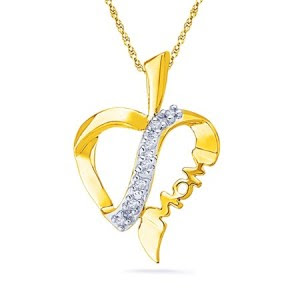A Diamond Cut Value Guide for Beginners
To truly understand the value of a diamond, you need to understand the different components that make a diamond special—what makes it clear, bright, and brilliant. Cut is one of those main components. In fact, it could be considered the most important component, as cut determines how light enters and refracts within a stone, giving diamonds their distinctive sparkle.
Most people, however, confuse “cut” with “shape”—round, princess, pear, cushion, etc. While the shape of the diamond can affect its value (for example, round cut diamonds tend to be the most expensive,), the diamond cut proportion is what you need to look out for.
Our quick diamond cut value guide breaks it down:
Shallow Cut Diamond
If a diamond is too shallow in depth, light will enter the diamond but escape through the bottom of the diamond. This means you won’t have the white “flash” that many diamonds exhibit when moved under light, and the diamond will appear darker. One reason people may choose to purchase a shallow cut diamond (also known as a “spread” diamond) is that because of it’s short depth, you can get a wider diamond for a lower price. The diamond will look very big, but won’t have very good brilliance.Deep Cut Diamond
Light is also lost when a diamond is cut too deep, but in a different way: the diamond will be proportionally taller, which means the facets are also steeper. This will cause any light that enters the diamond to reflect at a wide angle, eventually causing light to reflect out the sides of the diamond. Diamonds that are too deep will also be lower in price. Buyers may see a wonderfully inexpensive stone and think they’re getting a great deal, but when you sacrifice the proportions of a diamond, you’re also sacrificing sparkle.Ideal Cut Diamond
The “ideal” depth for a diamond will allow light to reflect against the various facets and return back the way it came in, giving you a beautiful, brilliant diamond. Most gemological labs grade depth by depth percentage, or the ratio between a diamond’s measured depth and diameter. Each diamond shape has its own ideal depth percentage.Know Your Diamond Cut Grade
How do you know if a diamond is shallow, deep, or ideal?If you’re buying a round diamond, it’s easy—ask for a diamond’s certification. The GIA, one of the most well-known and reputable labs today, grades round diamonds based on a scale of EXCELLENT to POOR.The better the grade, the more beautiful the diamond—and the higher the price.
For other diamond shapes, there may not be a standard certification. Many jewelers have their own internal certification that can help guide your buying decision, but if you really want to look into all the factors that make up a diamond cut, start with depth percentage, then look at…
Table Percentage.
A diamond’s table is its largest facet. The table is the top flat shiny surface of the stone.If the table is too wide, it overwhelms the body of the diamond. However, a table that is too small won’t pull in and reflect enough light. Each diamond shape requires a different table percentage for optimum brilliance. Find out the ideal table percentage for all diamond shapes via our diamond shape directory.Crown Measurement
The crown of a diamond is the area around the diamond that is located directly below the table. The crown features numerous facets to pull light into the stone. Diamond labs measure the crown by reporting its height and the angle of its cut. And, yes, the crown affects the depth! The crown should be well proportioned to the table and the culet. The angle shouldn’t be too severe.Pavilion Depth
Brilliant cuts display fire because of the cone-shaped pavilion. Located directly under the girdle, the pavilion includes numerous facets and serves to refract and reflect light throughout the internal structures of the stone. The depth of the pavilion is pertinent to the cut grade. If a diamond’s pavilion is too deep, light gets lost in the stone. However, a shallow stone will also appear dull and muted.Diamond Symmetry
Depth of the stone, as well as the overall length and width, affects the beauty of the diamond’s overall appearance. With fancy cuts like heart, marquise, pear and oval shapes, symmetry is especially important. A wide heart can look more like a round stone, and a wide marquis may look more like an oval.
With so many options to customize wedding band and engagement rings rose gold, couples are sure to
find rings they will love and treasure. Celebrating your commitment to
your spouse has never been so easy and intimate!




Comments